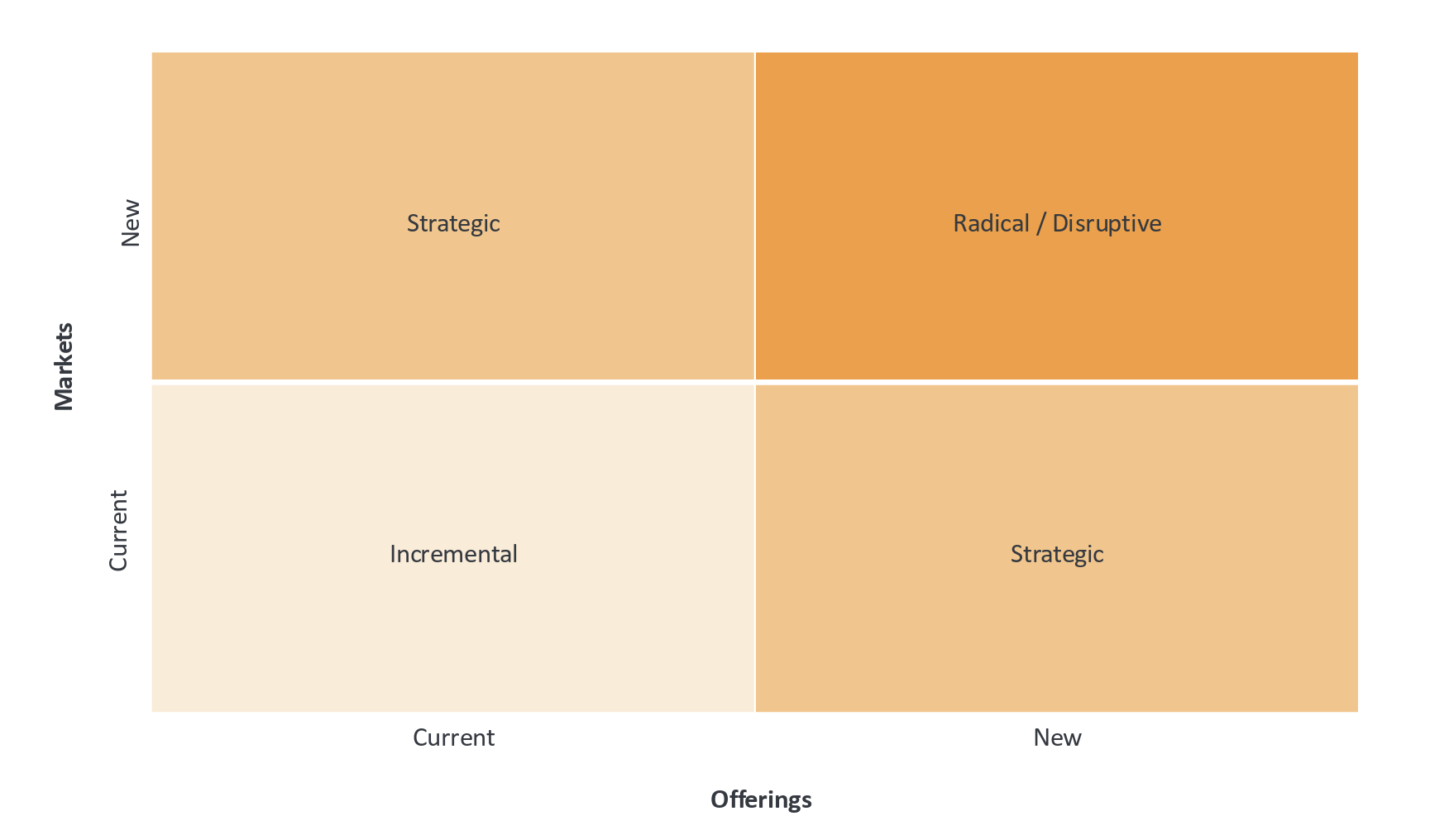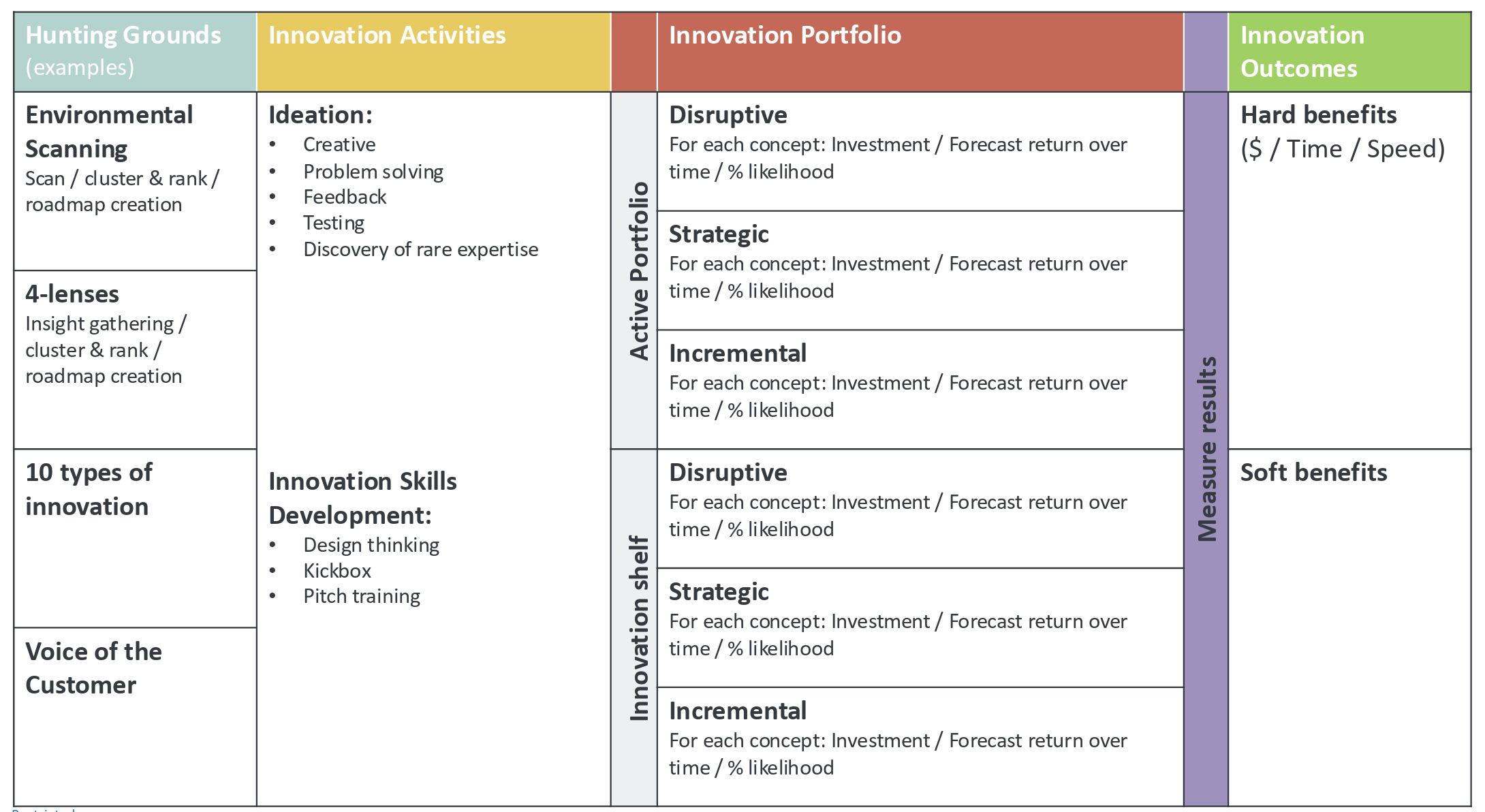Innovation is tomorrow’s growth. Portfolio management is how you decide which “tomorrows” to fund—and which to stop.
This page captures the highlights from a focused knowledge session led by Colin Nelson, HYPE’s Chief Innovation Consultant. Below you can either read the concise summary of Colin’s practical playbook for building and governing high-impact innovation portfolios, or watch the full recording for the complete session and examples.
Use the summary for a fast read; watch the recording for the full discussion, Q&A and real-world case examples.
Why Portfolio Management Is Surging in Relevance
Growth pressure isn’t new. What is new: disruption cycles keep shrinking while resources stay finite. Big organizations decentralize innovation (divisions, countries, P&Ls), which helps execution but obscures what’s actually being built. Without a transparent, governed portfolio, the future becomes guesswork.
The Portfolio Problem (In Plain Terms)
Low transparency: new things are scattered across teams and tools.
Weak governance: pet projects sneak through; good bets stall.
Long cycles vs. fast markets: fivey–ear bets meet 18–month shifts.
Core vs. capabilities: we sell X today, but our real assets may point elsewhere.
Leaders want a simple, predictive view of value (revenue, profit, timing, risk). Innovators want fair selection and resource clarity. Both need a way to pivot as evidence changes.
What “Good” Looks Like
Local flexibility, common spine: teams work their way, but share a macro process and minimum data so the whole can be governed.
Independent forecasting: concept owners don’t grade their own homework.
Regular reviews: stop, start, or doubledown with evidence.
A home for “not now”: an Innovation Shelf for good ideas paused due to timing, tech, or budget.
Eight Best Practices You Can Implement Now
1) Pick a Process (then iterate)
There’s no perfect model—stage–gate, agile, hybrid all work. What matters:
Stages map to your real decision points (money, capacity, compliance).
Different types (incremental/strategic/disruptive) can have lightly different tracks.
Treat the process as a product: review and refine.
An Example:
2) Balance by Context, Not a Fixed “Golden Ratio”
Retire the one–size–fits–all. Balance depends on urgency to change and industry disruption. Use an Ansoff matrix (offerings × markets) to visualize spread and ask:
Are we overweighting incremental when our core is eroding?
Do our strategic bets fill the 2–3 year revenue gap?
Are we carrying a few high–uncertainty, high–optionality shots

3) Keep Governance Simple
Make it easy to participate and easy to compare:
A Minimum Viable Data set (see best practice #6) for every concept.
Central roll–ups for visibility; local autonomy for execution.
4) Create an Innovation Shelf
A searchable home for good concepts you’re not doing now (tech not ready, budget tight, wrong timing). Capture at least:
Opportunity magnitude (order of magnitude is fine)
Work done so far; key assumptions and blockers
Fit to capabilities/strategy
When a live project stops or a slot opens, pull from the shelf first.
5) Decouple People from Outcomes
Treat innovation as a funnel, not a pipeline. Most things shouldn’t ship.
Reward good process (clear learning, timely kill decisions), not just launches.
Normalize “we tested it properly and we’re stopping” as a success for the system.
Reallocate talent and budget fast when evidence says pivot/stop.
6) Standardize a Minimum Viable Data Set
For every concept, capture five fields so you can compare apples to apples:
1. Money in (budget required)
2. Capacity in (people/time)
3. Impact out (revenue, savings, or strategic value)
4. Timeline (to first value and to scale)
5. Confidence (probability weighting on the forecast) Use this to build confidence–weighted views of the portfolio.
7) Build Agility Into Reviews
Gate reviews offer support, not just “go/no–go.”
Use independent assessors to sanity check forecasts.
Tap collective intelligence mid journey to unblock, derisk, and value boost (“How do we add +10% impact or −5% cost before rollout?”).
8) Make KPIs & Dashboards Predictive
Leaders need a line of sight from bets to business outcomes. Useful lenses:
Portfolio mix by horizon/Ansoff quadrant
Confidence weighted impact by quarter/year
Capacity allocation vs. plan (and redeployment after kills)
Cycle times by stage; kill ratio and reasons
Shelf health: items, age, revival rate, wins from shelf

Quick Start (30–60 Days)
1. Inventory: stand up the macro process and capture the 5–field data for all active concepts (and a first pass at the shelf).
2. Visualize: plot the portfolio on an Ansoff matrix and produce a confidence weighted forecast.
3. Govern: schedule monthly portfolio reviews; decide stop/continue/boost; refill from the shelf.
If you want help applying Colin’s playbook to your organization, book a free, no-pressure consultation or request a personalized demo of HYPE’s portfolio capabilities.




